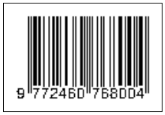Perancangan dan Pembuatan Data Acquisition Device Sebagai Sistem Akuisisi Data untuk Kendali Mobil Formula Student
Leonard Fidelcristo Supit(1*), Tri Wahyu supardi(2), Triyogatama Wahyu Widodo(3)
(1) Program Studi Elektronika dan Instrumentasi, FMIPA UGM, Yogyakarta
(2) Departemen Ilmu Komputer dan Elektronika, FMIPA UGM, Yogyakarta
(3) Departemen Ilmu Komputer dan Elektronika, FMIPA UGM, Yogyakarta
(*) Corresponding Author
Abstract
Data Acquisition Device (DAQ) is an electronic component used in formula student vehicles. To optimize the performance of the formula student vehicle and its driver, it is necessary to analyze and monitor the data acquisition system. Parameters acquired on the car include the position of the brake pedal/throttole and wheel speed.
DAQ system has 5 input channels namely 3 analog input pins and 2 digital input pins, and 3 output channels, which is the controller pin, fault pin, and brake light pin. The DAQ system in this research is designed and made using Teensy 3.6, a signal conditioning circuit consisting of an RC low pass filter, voltage follower, non-inverting amplifier, and logic level shifter. DAQ system uses CANBUS to read and process sensor data.
DAQ system can acquire data from the KTC Linear Motion Position sensor PZ-12-A-50P with an accuracy value of 99,91%; Hall-effect Rotary Position sensor RTY120LVNAX with an accuracy value of 99,94% for both the first and second sensors; and Proximity sensor LJ12A3-4-Z/BX with an accuracy value of 99,58% for the first sensor and 99,46% for the second sensor. DAQ is able to run controller signal processing, detect faults, and activate brake light signal according to FSAE rules.
Keywords
Full Text:
PDFReferences
[1] J. R. Chandiramani, S. Bhandari, and S. A. Hariprasad, “Vehicle Data Acquisition and Telemetry,” 2014 Fifth International Conference on Signal and Image Processing, Jan. 2014, doi: https://doi.org/10.1109/icsip.2014.35.
[2] FSG, “FSG: Formula Student Germany,” Formulastudent.de, 2022. https://www.formulastudent.de
[3] Z. Li, D. Wang, and Q. Kang, “The Development of Data Acquisition System of Formula SAE Race Car Based on CAN Bus Communication Interface and Closed-Loop Design of Racing Car,” Wireless Communications and Mobile Computing, vol. 2021, pp. 1–18, Aug. 2021, doi: https://doi.org/10.1155/2021/4211010.
[4] C.SAE, “China Society of Automotive Engineers,” www.sae-china.org, 2022. http://www.sae-china.org/
[5] G. Andria, F. Attivissimo, A. Di Nisio, A. M. L. Lanzolla, and A. Pellegrino, “Design and implementation of automotive data acquisition platform,” 2015 IEEE International Instrumentation and Measurement Technology Conference (I2MTC) Proceedings, May 2015, doi: https://doi.org/10.1109/i2mtc.2015.7151278.
[6] Arjuna UGM, “Arjuna UGM – Race the Future,” 2022. https://arjunaft.web.ugm.ac.id (accessed Mar. 25, 2023).
[7] M. Fathizadeh and A. Ayyad, “Application of Remote Telemetry for Improving Formula SAE Car Performance,” Transactions on Engineering Technologies, pp. 229–243, Oct. 2018, doi: https://doi.org/10.1007/978-981-13-2191-7_17.
[8] Peraturan Menteri ESDM Nomor 15 Tahun 2013, “JDIH KESDM,” jdih.esdm.go.id, 2013. https://jdih.esdm.go.id/index.php/web/result/801/detail (accessed Mar. 25, 2023).
[9] FSAE Rules, “FSAE: Formula SAE,” www.fsaeonline.com, 2023. https://www.fsaeonline.com/
[10] Braune, Nils, 2014, “Telemetry Unit for a Formula Student Race Car,” Thesis, Institut für Technische Informatik und Kommunikationsnetze, ETH Zürich
[11] Z. Taha et al., “Application of Data Acquisition and Telemetry System into a Solar Vehicle,” 2010 Second International Conference on Computer Engineering and Applications, 2010, doi: https://doi.org/10.1109/iccea.2010.26.
[12] Suhaeb, S., Djawad, Y . A., Jaya, H., Ridwansyah, Sabran, & Risal, A. 2017. Mikrokontroler dan Interface. Universitas Negeri Makasar, Makasar
[13] I. C. Kurniawan. 2021. Rancang Bangun Battery Management System dengan Passive Balancing untuk Baterai Lithium Ion 18650. Universitas Gadjah Mada, Yogyakarta
Article Metrics
Refbacks
- There are currently no refbacks.
Copyright (c) 2023 IJEIS (Indonesian Journal of Electronics and Instrumentation Systems)

This work is licensed under a Creative Commons Attribution-ShareAlike 4.0 International License.
View My Stats1







